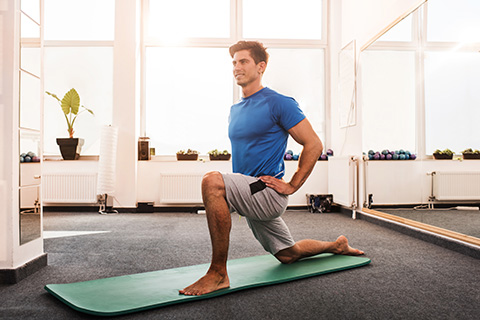Regular exercise and traditional resistance training are known to be effective methods for increasing muscle strength and size.
However, there has recently been an emerging research interest in the benefits of static stretching on performance and muscle strength acquisition. In this study, we specifically explored the effect of static stretching on the pectoral muscles, an area that has been investigated to a lesser extent compared to other muscle groups.
A recent study published in the European Journal of Applied Physiology analyzed the effects of an 8-week static stretching program on pectoral muscles and compared them to the effects of traditional resistance training. The results showed significant increases in maximal strength, muscle thickness, and flexibility in both groups.
How was the study on the effects of static stretching conducted?
The study included 81 active participants who were randomly assigned to one of two groups: static stretching, resistance training or control group. For 8 weeks, the static stretching group performed 15-minute sessions per day, 4 days per week, focusing on the pectoral muscles. Meanwhile, the resistance training group performed weight training sessions 3 days a week, with repetitions of 5 sets of 12 repetitions.
The results of the study showed a significant increase in all parameters evaluated in both intervention groups. In both the static stretching group and the resistance training group, an increase in maximal strength, muscle thickness, and flexibility was observed. These findings indicate that static stretching can be an effective strategy for improving performance and provides comparable results to traditional resistance training in the development of strength and muscle hypertrophy.

An interesting aspect of the study was the group time categorization and significant interaction between static stretching and resistance training in relation to strength, muscle thickness, and flexibility. This suggests that static stretching has a positive and specific impact on the pectoral muscles, which may be especially relevant for athletes and the public interested in this area of study.
While the results of this study are promising, it is important to note that the practical application of static stretching to increase strength and muscle hypertrophy in active recreational participants may be limited due to the need for equipment and the long stretching durations required. Nevertheless, these findings open the door for future research to further explore the underlying mechanisms of stretching and to determine the situations in which this form of training may be most beneficial.
Are you passionate about sports and looking to take your career to the next level?
If you want to enter this field and maximize your potential as a sports professional, our program of Master in Physical Activity: Sports Training and Management offered by the Universidad Internacional Iberoamericana (International Iberoamerican University, UNIB) is the perfect opportunity to enhance your skills and open new doors in your career.
Join our institution and become part of a community dedicated to achieving excellence in sports performance and functional assessment. Together, we will unleash your potential and shape the future of the sports industry.
Source: Influence of 8-weeks of supervised static stretching or resistance training of pectoral major muscles on maximal strength, muscle thickness and range of motion

